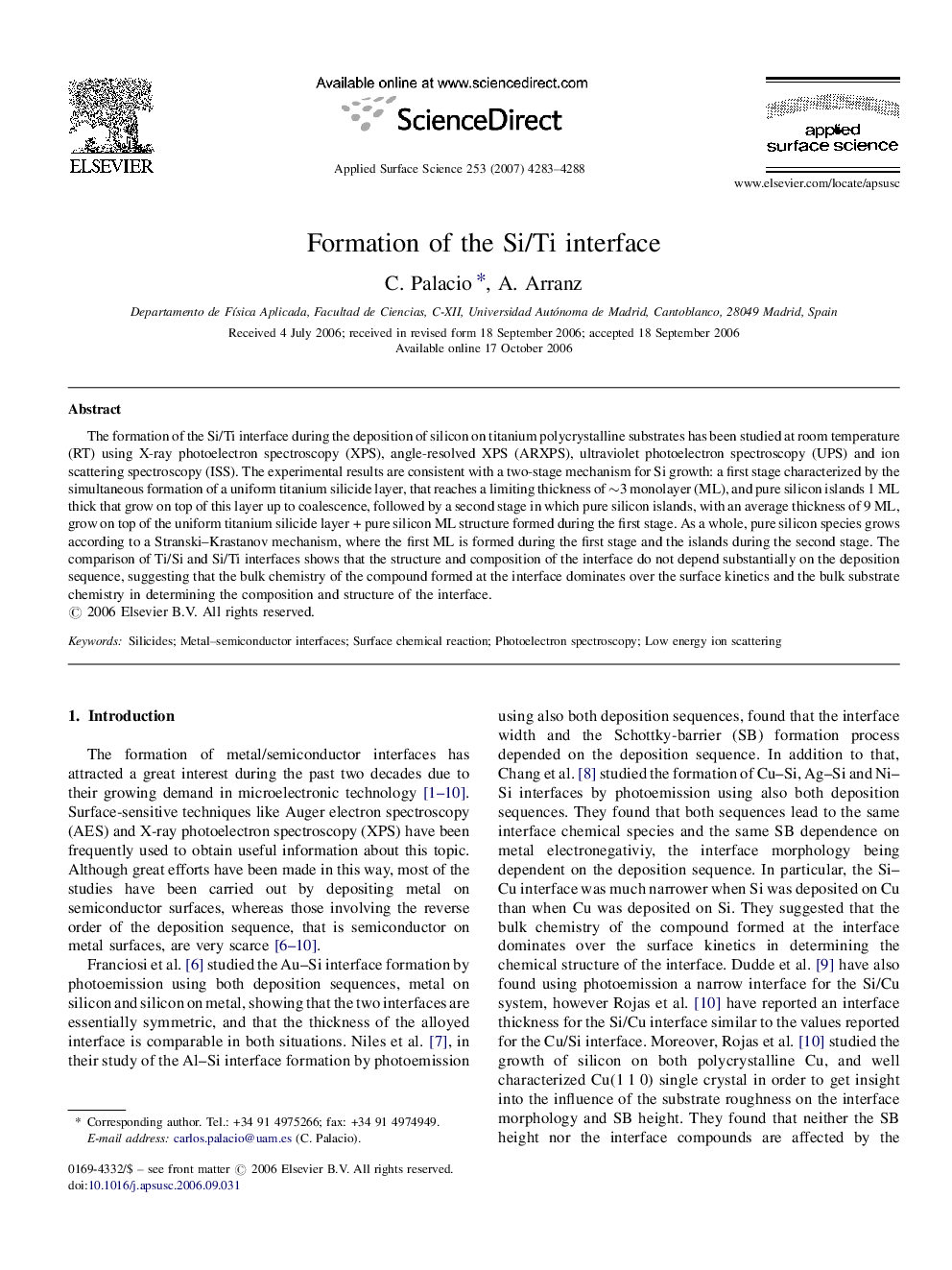| Article ID | Journal | Published Year | Pages | File Type |
|---|---|---|---|---|
| 5369798 | Applied Surface Science | 2007 | 6 Pages |
The formation of the Si/Ti interface during the deposition of silicon on titanium polycrystalline substrates has been studied at room temperature (RT) using X-ray photoelectron spectroscopy (XPS), angle-resolved XPS (ARXPS), ultraviolet photoelectron spectroscopy (UPS) and ion scattering spectroscopy (ISS). The experimental results are consistent with a two-stage mechanism for Si growth: a first stage characterized by the simultaneous formation of a uniform titanium silicide layer, that reaches a limiting thickness of â¼3 monolayer (ML), and pure silicon islands 1 ML thick that grow on top of this layer up to coalescence, followed by a second stage in which pure silicon islands, with an average thickness of 9 ML, grow on top of the uniform titanium silicide layer + pure silicon ML structure formed during the first stage. As a whole, pure silicon species grows according to a Stranski-Krastanov mechanism, where the first ML is formed during the first stage and the islands during the second stage. The comparison of Ti/Si and Si/Ti interfaces shows that the structure and composition of the interface do not depend substantially on the deposition sequence, suggesting that the bulk chemistry of the compound formed at the interface dominates over the surface kinetics and the bulk substrate chemistry in determining the composition and structure of the interface.
